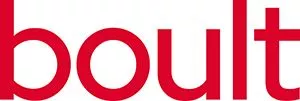- within Food, Drugs, Healthcare and Life Sciences topic(s)
- within Corporate/Commercial Law, Litigation and Mediation & Arbitration topic(s)
As part of efforts to improve sustainability in the supply chain, smart packaging is a hot topic in a number of consumer industries, but no more so than in the food and beverage space. Advancements in the way our food is packaged, presented and delivered go beyond a need for sustainability – although that is understandably a considerable concern. The integration of technology and new materials into everyday packaging is improving the
In this article, we'll take a look at the potential for smart packaging to revolutionise food and beverage products.
Sustainability: The use of recycled (and recyclable) materials in food packaging is a hot topic in manufacturing and major food producers are looking for ways to improve the green footprint of their products. Food manufacturing giant Nestle, for example, is looking to achieve net zero for greenhouse admissions by 2050 and packaging is a key part of this strategy.
New materials are being developed as an alternative to plastic used in food packaging. Major McDonald's franchisee Arcos Dorados has incorporated an all-natural plastic alternative for the lining of fast-food bags created by JJ Green Paper. The coating will be applied to bags, boxes, wrap paper, cups and straws. In the same vein, British startup Notpla is creating takeaway containers and boxes crafted from seaweed.
Improving the reusability of packaging is the other aspect in creating greener packaging solutions. This could be through making the materials involved in packaging easier to recycle, or by incorporating a higher proportion of previously-recycled material into new packaging.
Freshness: New materials and packing methods are being developed to improve the freshness of food products. Improvements to the shelf-life of goods will have knock-on benefits in reducing food waste. Newly treated materials and production methods can reduce or counteract the creation of ripening agents such as ethylene gas and improve the longevity of fresh and dry products on store shelves.
There are also potential benefits to these forms of products for use in medical applications for the secure storage of delicate materials for transplants and surgeries.
Interactivity: Incorporated QR codes and NFC tags have a range of applications, including driving customer engagement by providing recipes or meal inspiration for ingredients on food packaging. QR codes could assist in confirming the authenticity of the products in question.
One touch scan to shop for products – scan a barcode on packaging and it could take you straight to a website to reorder the product. This might incorporate marketing elements as part of the packaging – such as the McDonalds Monopoly game or the Hungry Jack's UNO collaboration.
Tracking and tracing: This will also encompass developments such as tamper-evident seals or RFID tags. Smart packaging can assist in warehousing and logistics, by providing integrated RFID/NFC tags allow for real-time tracking and monitoring of warehoused goods to assist with accurate monitoring of stock levels.
As an offshoot of this, the security of goods in stores and throughout the supply chain can be improved through the incorporation of tags which can integrate with in-store security systems and make it easier for logistics company to monitor the movement and storage of goods.
Conclusions
Smart packaging goes beyond creating sustainable new alternatives for the food industry. It can improve security, assist with storage, and drive greater interactivity with customers.
The content of this article is intended to provide a general guide to the subject matter. Specialist advice should be sought about your specific circumstances.


